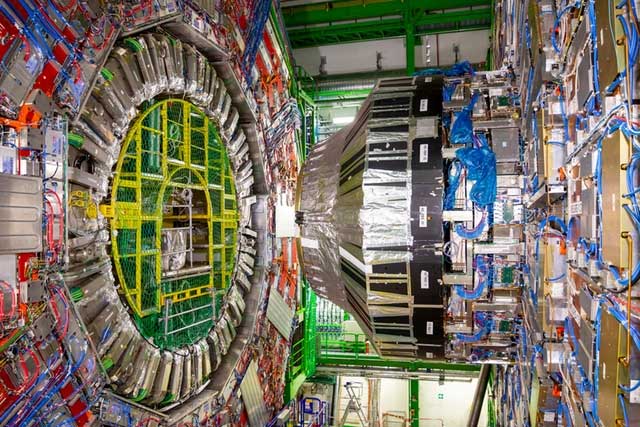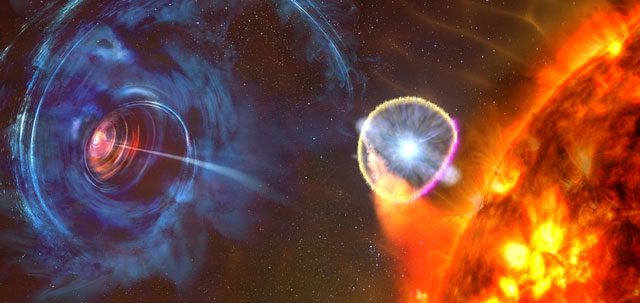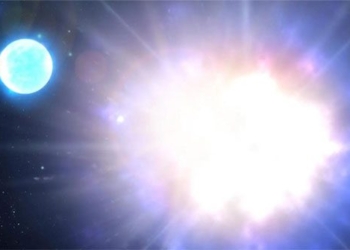The Angels and Demons by Dan Brown is one of the best-selling novels in the world today. However, it does not entirely align with the laws of physics.
What is Antimatter?
As the name suggests, antimatter is primarily composed of antiparticles or particles that oppose the “ordinary” matter. Theoretically, there should be antiprotons, positrons, and antineutrons, which would bond together to form antihydrogen.
However, due to the inherent nature of the space around us flowing in one direction, producing antimatter is incredibly challenging. So far, only a few nanograms of antimatter have been created. This production process stems from particle accelerators, collisions of cosmic rays, and emissions from certain types of radioactive decay.
The fundamental characteristics of a particle and its antiparticle are the same. They differ only in their electric charge and their quantum arrangements are oppositional. In reality, antimatter is not necessarily an evil entity.
The effects of antimatter far exceed anything currently existing, making the harnessing of even a small amount potentially capable of producing immense energy. While ordinary matter always has certain inefficiencies when converting mass to energy, antimatter boasts a 100% success rate.

Particle accelerator used for producing antimatter.
A More Realistic View of Antimatter
Although antimatter seems to be an incredibly efficient energy source, once created, it would operate more like a dormant energy source. Its effectiveness in terms of mass-to-energy ratio is outstanding, but it has significant drawbacks. The probability of creating antimatter is one in a billion due to its instability. The moment it interacts with “ordinary” matter, both are annihilated.
Given this inherent instability, the next steps after creating antimatter remain a significant question. How can we protect this antimatter from interacting with ordinary matter?
The prospect of utilizing antimatter is more than appealing, but at our current level of development, this seems impossible. There are too many theoretical and practical obstacles. The production process itself is dangerous, cost-inefficient, and raises ecological ethical concerns. Additionally, the responsibilities for supply and storage come into play.
Another aspect that appears quite far-fetched but holds special importance is the global scenario. The geopolitical and global stakeholder landscape today is highly volatile and can be influenced by the smallest issues. Antimatter, having the potential for significant impact, would only contribute to this endless cycle of conflict and monopolization.

Conceptual image of an antimatter bomb. The energy released from matter-antimatter annihilation is far greater than anything achievable through chemical reactions, nuclear fission, or even nuclear fusion.
Angels and Demons – Accurate or Misleading?
Inspired by the literal backdrop of the story, Dan Brown has done a commendable job writing about antimatter in a profound way. Somehow, he has chosen a theme that is both authentic and vividly engaging.
At its most basic level, the novel appears to be correct in its portrayal. Antimatter and the CERN facility in Switzerland do exist.
The overall description of antimatter at various points in the film and even the climax where the main character and his companions race against time to prevent the so-called antimatter bomb from exploding depicts something far removed from the actual consequences.
Antimatter can only be devastating when it is not allowed to interact with ordinary matter. Under normal conditions, this interaction would have the annihilation of both charges on either side of the matter.
While the novel merely mentions the emission of a very bright light, the actual interaction of antimatter with ordinary matter is quite harmful to health. Gamma rays and X-rays would be released, causing radiation to seep into the surrounding environment, leading to heating and ionization. Compared to a similar chemical and physical scenario, the impact would be akin to the bomb dropped on Hiroshima, but ten times more potent.
The novel primarily focuses on delivering a fictional masterpiece to readers. The scientific assumptions and conclusions are used to reinforce the main plot and further solidify the narrative. Consequently, some scientifically inaccurate claims can be overlooked as the author strives (and succeeds) in delivering a literary work that is “a breath of fresh air.”





















































